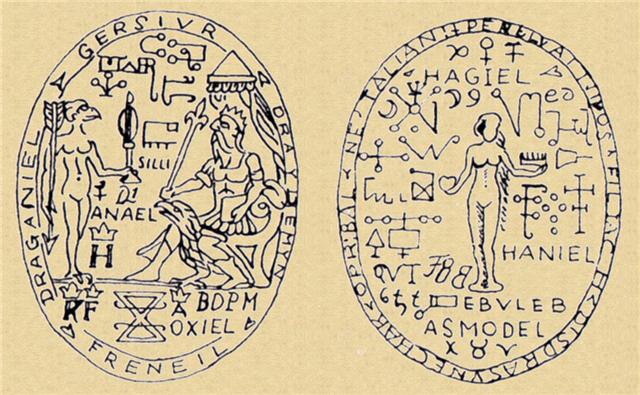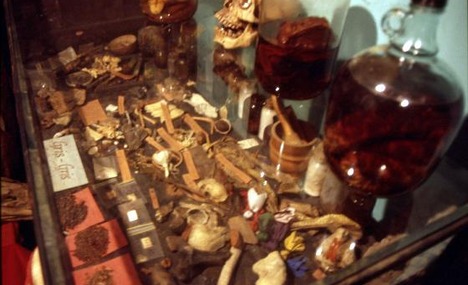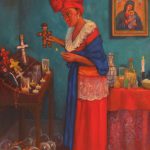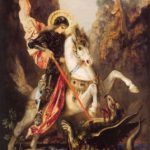Talismans are artefacts, object, design, or symbol that are believed to be endowed with magical or supernatural power, and to bestow it to their possessors. Talismans are frequently confused with amulets which are objects which passively protect the owner from evil and harm.
Talismans have been discovered in all historical periods. The Egyptians and Babylonians used them when attempting to alter the forces of nature. In the Middle Ages, holy relics and other objects assumed the value of talismans in attempts to cure illnesses. Some thieves converted severed hands of thieves into talismans (see The Hand of Glory) to assist them in their trade.
Many magicians sought the assistance of talismans which they made in elaborate ceremonies which were conducted during periods of auspicious astrological signs. During these rituals they recited incantation to conjures the desired spirits who imbued the talismans with magical power. The talisman most sought after was the elusive Philosopher’s Stone, which the alchemists thought would transform base metals into silver and gold.
Grimoires, especially in magic, offer instructions on the making of talismans. Many talismans were inscribed on precious stones or parchment under auspicious astrological signs. Talismans were made for many endeavors such as getting rich, winning at gambling, falling in love, prevention of sudden death, improvement of memory, and even making a good speech.

An example is the talisman belonging to Catherine de Medici, queen consort of Henry II of France which she constantly carried. It was a medal allegedly made from metals that were melted together during favorable astrological signs, and also added in was human and he-goat blood. Although the original was broken at her death, a copy exists in the Bibliotheque Nationale in Paris.
On one side of this medal is engraved the god Jupiter, the eagle of Ganymede and a demon with the head of the Egyptian god Anubis; on the other side is a Venus figure believed to be Catherine flanked by demons. She believed the talisman conferred upon her clairvoyance and sovereign power.
In Vodoun, or Voodoo, gris-gris resemble charms or talismans which are kept for good luck or to ward off evil.
Gris-gris
Although the exact origins of the word are unknown, some historians trace the word back to the African word juju meaning fetish. An alternative theory is that the word originates with the French joujou meaning doll or play-thing.
The gris-gris originated in Dagombha in Ghana and was associated with Islamic traditions. Originally the gris-gris was adorned with Islamic scripture and was used to ward off evil spirits (djinn) or bad luck. Historians of the time noted that they were frequently worn by non-believers and believers alike, and were also found attached to buildings. In the 1800s, gris-gris was used interchangeably in Louisiana to mean both bewitch and in reference to the traditional amulet.

In New Orleans, Gris Gris Bags are used for various things such as attracting money and love, stopping gossip, protecting the home, maintaining good health and achieving innumerable other ends. At one time, every police officer was known to carry a gris-gris for protection.
A gris-gris is ritually made at an altar containing the four elements of earth (salt), air (incense), water and fire (a candle flame). The number of ingredients (placed in the gris-gris) is always one, three,. five, seven, nine or thirteen. Ingredients are never an even number or more than thirteen. Stones and colored objects are chosen for their occult and astrological meanings corresponding to the purpose for which the gris-gris is to be used.
Legends concerning the famous New Orleans Voodoo Queen Marie Laveau claim her gris-gris contained bits of bone, colored stones, graveyard dust (also called goofer dust), salt, and red pepper. Other more elaborate gris-gris were made of bird nests and horse hair weavings.One of Marie Laveau’s more horrible ‘wangas’, or bad luck reputedly was a bag made from a shroud of a person that had been dead for nine days. It contained the following ingredients a dried one-eyed toad, the little finger of a black person who had committed suicide, a dried lizard, a bat’s wings, a cat’s eyes, an owl’s liver, and a rooster’s heart.
A red-flannel bag holding a lodestone or magnet was a gambler’s favorite gris-gris, which was suppose to absolutely guarantee good luck. Another favorite gris-gris of gamblers was made of chamois, a piece of red flannel, a shark’s tooth, pine-tree sap, and dove’s blood. The dove’s blood and sap were mixed together, and this mixture was used to write the amount that the gambler wished to win on the chamois, which was wrapped in the red flannel with the shark’s tooth between the two layers, all of which was sewn together with cat’s hair. This charm was supposedly worn in the left shoe to bring good and often uncomfortable luck.
What was referred to as “putting a gris-gris” on a person could be used to bring others bad luck or misfortune. Such gris-gris filled with gunpowder or red pepper were thrown on a person or at his door supposedly to get him into a fight. They also were to get rid of people. Marie Laveau to have written a person’s name on a small balloon, then tied it to a statue of Saint Expedite, when released the person would supposedly depart in the same direction as the released balloon took. Leaving a gris-gris, usually containing powder, for a person generally that he or she was not in the “voodoos” favor and they had better watch their step.
In Santeria, gris-gris bags are called resquardos or “protectors.” A typical resquardos under the protection of the thunder god Chango usually contains herbs, spices, brown sugar, aloes, stones or other sacred relics, tied up in red velvet and stitched with red thread. Finally the Santerio attaches a gold sword, the symbol of Saint Barbara (Chango’s image of a Catholic saint), and if the sword breaks Chango has interceded on behalf of the owner.
Gurunfindas
Gurunfindas are talismans made by the Santeria’s black witches, mayomberos, to ward off evil from themselves and direct it toward others.
To make a gurunfindas the mayombero first hallows out a guiro, a hard, inedible plant found in the tropics, and fills it with the heads and hearts of a turtle and various specious species of parrots, the tonguer and eyes of a rooster, and seven live ants.
Next the mayombero adds seven teeth, the jawbone and some hair of a cadaver, along with the cadaver’s name written on a piece of paper, and seven coins to pay the dead spirit for his services.
Then the mayombero pours rum over the mixture and buries it beneath the sacred ceiba tree for 21 days.
When he disinters the guiro the mayombero marks the outside of the fruit with chalk, and then hangs the charm near his home.








